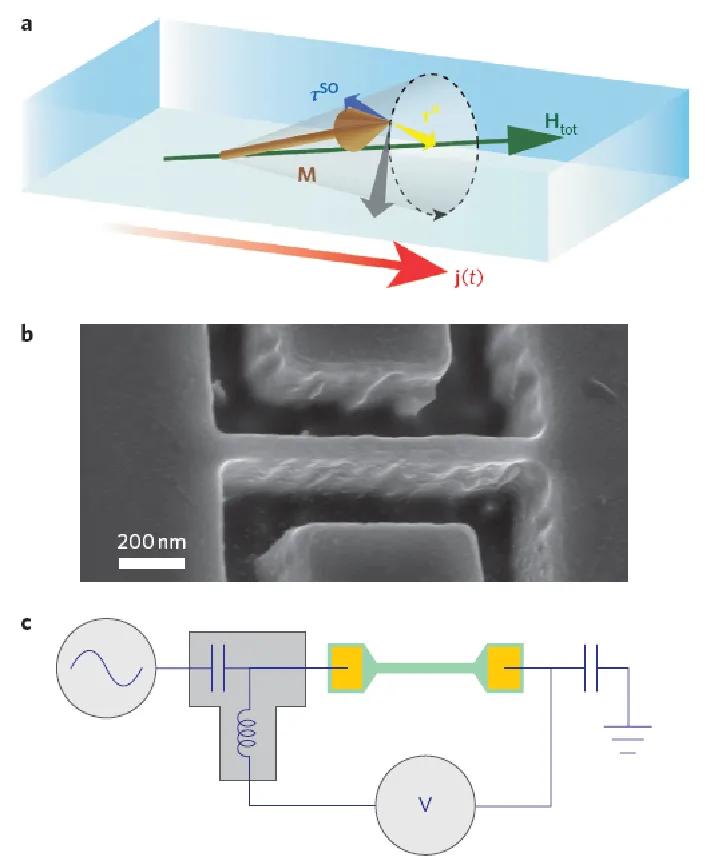Relativistic behaviour of electrons makes it possible to utilize magnetic resonance in electronic nanodevices. The discovery is a result of a longstanding fruitful collaboration of scientists from the Institute of Physics of the Academy of Sciences of the Czech Republic and laboratories in Cambridge and Nottingham in the UK. The work was published in the prestigious journal Nature Nanotechnology.
In physics, magnetic resonance represents one of the basic methods for investigating new magnetic systems. With the help of known magnetic elements, it is also an indispensable diagnostic tool utilized, e.g., in medicine. The above work introduces a new physical principle of magnetic resonance. The remarkable aspect of the principle is that the driving radiofrequency field is generated and acts directly inside the studied magnetic device, and the device itself serves also as the detector of the induced magnetic oscillations. The researchers have demonstrated that the method allows performing detail investigation of magneto-electronic devices with dimensions of only several tens of nanometers.
Similar to conventional electronics, spintronics which utilizes both electrical and magnetic properties of electrons in e.g. new types of memories is approaching the tiny scales of sever hundreds or just tens of nanometers. The relativistic magnetic resonance may become an important tool for exploring and utilizing these ultrasmall spintronic devices.
For detailed information contact Tomáš Jungwirth a Jörg Wunderlich.
